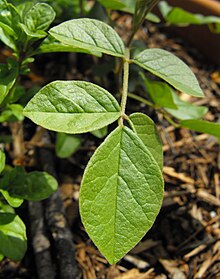Date: December 1, 2014
Source: Federation of American Societies for Experimental Biology
Summary:
New research shows that a component found in in the plant, Glycyrrhiza uralensis, may inhibit the development of metabolic disorders by stopping the activation of NLRP3, a protein involved in the disease process. Specifically, the researchers identified isoliquiritigenin as having the ability to attenuate high-fat, diet-induced obesity, type 2 diabetes and hepatic steatosis in mice.
New research published in the December 2014 issue of the Journal of Leukocyte Biology, shows that a component found in in the plant, Glycyrrhiza uralensis, may inhibit the development of metabolic disorders by stopping the activation of NLRP3, a protein involved in the disease process. Specifically, the researchers identified isoliquiritigenin as having the ability to attenuate high-fat, diet-induced obesity, type 2 diabetes and hepatic steatosis in mice.
"Identification of small compounds that inhibit the NLRP3 inflammasome is required to design effective therapeutics," said Kiyoshi Takatsu, Ph.D., a researcher involved in the work from the Department of Immunobiology and Pharmacological Genetics, Graduate School of Medicine and Pharmaceutical Science for Research at the University of Toyama in Toyama Japan. "We hope that our findings will provide new information and strategy that can be exploited for development of new herbal medication of those diseases."
To make this find, scientists stimulated mouse macrophages with different inflammasome activators in the presence of isoliquiritigenin. Then, activation of NLRP3 inflammasome was examined by measuring IL-1beta production in the culture supernatants. Results showed that relatively low concentrations of isoliquiritigenin were highly effective in inhibiting IL-1beta production compared with known NLRP3 inflammasome inhibitors, such as parthenolide and sulfonylurea drug glyburide. For animal studies, three groups of mice were used. The first group of mice was fed a normal diet and the second group of mice was fed a high-fat diet. The third group of mice was fed a high-fat diet supplemented with 0.5 percent isoliquiritigenin. High-fat diet feeding for 20 weeks induced obesity, type 2 diabetes and hepatic steatosis in mice, but supplementation of ILG markedly improved these disorders. Finally, supplementation of isoliquiritigenin inhibited high-fat diet-induced IL-1beta production in adipose tissue.
"Obesity and associated metabolic disorders are one of the most important emerging medical conditions. Recent work demonstrates a critical role for obesity-driven inflammation in a multitude of medical problems arising from obesity with a central role for the inflammasome," said John Wherry, Ph.D., Deputy Editor of the Journal of Leukocyte Biology. "This new work not only identifies a novel class of potential inflammasome inhibitors, but also demonstrates effectiveness in a preclinical model of obesity induced disease."
Story Source:
The above story is based on materials provided by Federation of American Societies for Experimental Biology. Note: Materials may be edited for content and length.
Journal Reference:
H. Honda, Y. Nagai, T. Matsunaga, N. Okamoto, Y. Watanabe, K. Tsuneyama, H. Hayashi, I. Fujii, M. Ikutani, Y. Hirai, A. Muraguchi, K. Takatsu. Isoliquiritigenin is a potent inhibitor of NLRP3 inflammasome activation and diet-induced adipose tissue inflammation. Journal of Leukocyte Biology, 2014; 96 (6): 1087 DOI: 10.1189/jlb.3A0114-005RR
Cite This Page:
Federation of American Societies for Experimental Biology. "Plant used in traditonal Chinese medicine may treat metabolic diseases and obesity." ScienceDaily. ScienceDaily, 1 December 2014. <www.sciencedaily.com/releases/2014/12/141201125200.htm>.

Nenhum comentário:
Postar um comentário